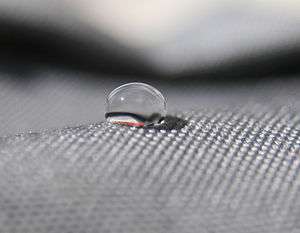Release agent

A release agent is a chemical used to prevent other materials from bonding to surfaces. It can provide a solution in processes involving mold release, die-cast release, plastic release, adhesive release, and tire and web release.
Applications
Asphalt
Asphalt Release Agents are chemical products developed and manufactured as alternatives to diesel and solvents commonly used for cleaning equipment associated with Hot Mix Asphaltic Concrete (HMAC) production and placement on government and private facilities. The United States Oil Pollution Act of 1980 was used as the foundation to build the current program. The intent of asphalt release agents is to eliminate harmful stripping products that come into contact with bituminous products and strip the asphalt (binding agent) from the aggregates causing potholes, raveling, and other detrimental pavement failures.
Concrete
In the concrete construction industry, form release agents prevent the adhesion of freshly placed concrete to the forming surface, usually plywood, overlaid plywood, steel or aluminum. In this application, there are two types of release agents available: barrier and reactive.
Barrier release agents prevent adhesion by the development of a physical film or barrier between the forming surface and the concrete.
Reactive release agents are chemically active and work by the process of a chemical reaction between the release agent and the free limes available in fresh concrete. A soapy film is created which prevents adhesion. Because it is a chemically reactive process, there is generally little to no residue or unreacted product left on the forming surface or concrete which provides for a cleaner process.
Water-based release agents are a result of more focus on health, environment and safety issues. This has resulted in development of new technologies largely focused on water-based formulations, with the movement being away from petroleum- or solvent-based products.[1]
Food processing
Release agents are used to aid in the separation of food from a cooking container after baking or roasting. Traditionally fat or flour have been used, but in industrial food processing other chemicals might be used. The application is called bakery release.
In bakery paper or greaseproof paper release agents like catalyst-cured silicone release coatings may be used.
Paper
In industrial papermaking release agents are used to get slip effect of the paper from the processing equipment. A release agent may be applied on the process rolls (like the yankee cylinder) or in the paper coating.
Some paper types are made with low Surface energy release coatings:
- Release liners for pressure-sensitive adhesive laminates and tapes
- Casting papers
- General industrial release papers
- Food-grade release and packaging papers
Plastics
Release agents are coated onto some plastic films to prevent adhesives from bonding to the plastic surface. Some release agents, also known as de-molding agent, form oil, parting agent or form releaser, are substances used in molding and casting that aid in the separation of a mould from the material being moulded and reduce imperfections in the moulded surface.
Rubber
There are two types of release agents used in the molding of rubber products. Both are silicone based. The decision on which to use has to do with lubricity and release. Water-diluted silicon is used when you have rubber sliding over a hot mold (sheets or slugs). The silicon keeps the rubber from sticking to the mold but just as important it lubricates the rubber so it will slide over the hot mold as it is loaded. Diluted silicon typically has to be applied every cycle. Semi-permanent mold release builds a silicon matrix on the mold that becomes a barrier between the rubber and the metal surface of the mold. The matrix is created by the other ingredients in the semi-permanent mold release. Applications of semi-permanent mold release vary from every cycle to once daily applications depending on the compound being molded and the design and quality of the mold.